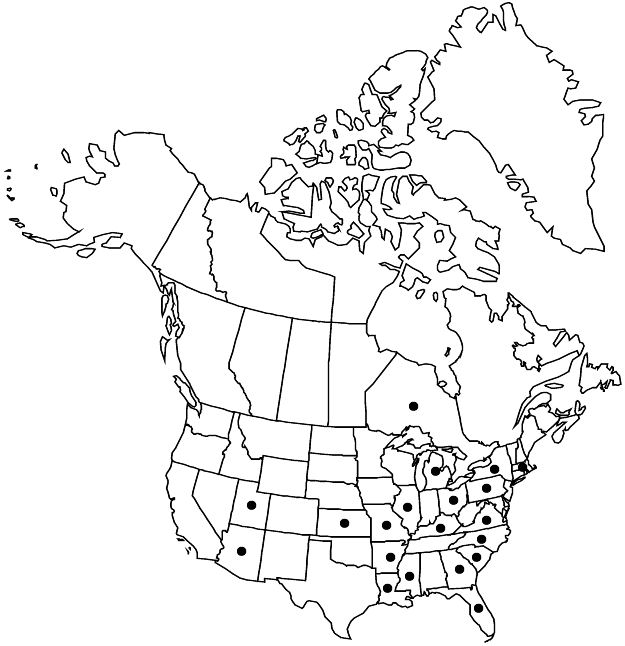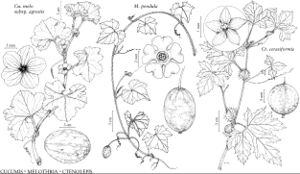Difference between revisions of "Cucumis sativus var. sativus"
FNA>Volume Importer |
FNA>Volume Importer |
(No difference)
| |
Revision as of 22:45, 16 December 2019
Plants: roots thin, without thick, woody rootstock. Tendrils hispidulous or antrorsely strigose. Leaves: petiole hispid to retrorsely strigose; blade broadly ovate, palmately 5- or 6-lobed, 6–15(–40) × 6–15(–35) cm, length 1–1.2 times width, base cordate, lobes triangular, margins serrate. Inflorescences: pedicels of pistillate flowers and fruits cylindric; staminate flowers (1–)3–7(–10) in fascicles, corolla tube 3.5–5(–6) mm; pistillate flowers: calyx lobes 3–4(–12) mm, petals 10–15(–25) mm, corolla tube 3.5–6.5 mm, glabrous inside. Pepos green to yellowish monocolor or with light green to whitish stripes, ellipsoid to cylindric, 5–20(–25) × 3–5 (–12) cm, smooth (ovary and developing fruits weakly aculeate), flesh whitish. 2n = 14.
Phenology: Flowering Aug–Nov.
Habitat: Gardens, fields, stream banks, around ponds, trash heaps, sometimes volunteering from past plantings
Elevation: 10–300(–1500) m
Distribution

Ont., Ariz., Ark., Fla., Ga., Ill., Kans., Ky., La., Mass., Mich., Miss., Mo., N.Y., N.C., Ohio., Pa., S.C., Utah, Va., Asia (e Himalayas), introduced also in West Indies, Pacific Islands (Hawaii).
Discussion
Selected References
None.
